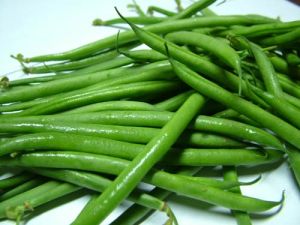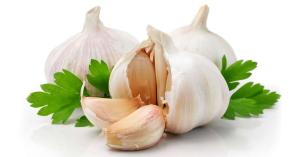So the sun is starting to creep out a little more each day. If you are brave enough to get yourself out for that early morning walk or run you may just be doing it in what is almost daylight now. That’s right, spring is here! Summer just around the corner, so what better time to get yourself outdoors and into the gardening spirit.
The UWS Community gardens have just kick started again on the Hamilton, Paisley and Ayr Campuses in the past weeks and we are looking forward to reaping a harvest of goodies in the near future. This blog post will cover 5 of the things we are planting right now, what amazing ways you can cook and enjoy them and most important of all, How YOU can get involved in the Community Gardens.
First things first, let’s see what we are growing and what we can do with it.

Potatoes
What is more versatile than the good old potato? Once we pull these from the ground the possibilities are almost endless. It could be in the form of mashed, chipped, roasted, sliced or whatever else to accompany a meal. It obviously does not just end there; they can often be the star of the show. I am thinking Dauphinoise potato, potato and leek soup or a good old baked potato with whatever filling you choose. Whatever way you choose to celebrate it, this versatile addition to the garden is well worth its place.

Peas
Remember your grandparents telling you it was important to eat your greens? Peas are a great example of this, especially when picked straight from the community garden. Fresh peas are a fantatic accompaniment to that old favourite of fish and chips on a Friday night. As much as the spring is in the air it can still be chilly, enter the opportunity to make yourself a nice warm pot of pea soup, the beautiful green colour always excites me just as I blitz it up with the blender,mmmmm! For more pea related recipes follow this link.

Onions
Ahhh, the old workhorse of the ingredient list. The onion often plays the role of the defensive midfielder on the football pitch or the cornerstone of a building, supporting and holding together all the other components around it with its strength and will. What would spaghetti bolognaise or a ratatouille be without this very ingredient? Not as good that’s what! Having these on hand, ready to grab from the garden is a real blessing, whether you are adding them as a building block to your recipe or giving them the lead role in a French onion soup, home grown is best! A great reason to get involved in the community garden!

French Beans
Back to the healthy greens again. French beans or green beans as I knew them as a kid were always one of my favourite parts of a Sunday dinner,(I was always a big veg fan) a colourful joy on the plate next to my roast and potatoes. Later in life I also found out while starting to cook myself these were great when still in their crunchy form. French beans work as a great ingredient within a Chinese style stir fry or a salad. Like everything else we have discussed before, there is no substitute for the real thing, fresh from your own garden. For some more recipes and ideas for these for this link…..

Garlic
It can be regarded as one of those love it or hate it things. This is usually depending on your take on the actual smell. I personally love the smell of garlic on my fingers after preparing a meal, that said, it isn’t often the best idea to load your dinner with it before heading out on a first date. One thing that is for sure, just as in the same case as its family member the onion, garlic is an unsung hero in many a recipe. The cornerstone of Chinese, Indian, Italian and many more cuisines, what would we do without it. Grow it in your garden and you have a lifetime supply of it, just make sure you and your partner are both eating it J
So we have covered 5 of the many great things we plan to grow in the near future within the community gardens. The bonus of getting involved is that you get to reap the benefits of all these fantastic bits of fresh produce. All we ask in return is your help and support, whenever you can around the garden sites. This is only one of the real benefits of getting involved, for more check out our mind map of benefits below!!!

The garden sessions run on a weekly basis. Days, times and places can be seen in the timetable below.

If that is not enough we have a load of further FREE opportunities upcoming relating to the community garden projects. Would you like to get involved in:
- A practical hands-on 16 hour Grow Your Owncourse, which will give you all the basic skills and knowledge to get going with some of your own food; whether on window-sills, gardens, allotments or in our beautiful community gardens. We can run courses as day long intensives or staggered over the semesters. To register interest please email Natalie.McCall@sauws.org.uk with GROW YOUR OWN in subject heading· A practical hands-on 16 hour Introduction to Permaculture course, which will give basic design skills for establishing no-waste projects. Special focus on permaculture in gardening setting. To register interest please emailNatalie.McCall@sauws.org.uk with PERMACULTURE in subject heading
The Green Games
Are you competitive in nature? Feeling athletic?? Get involved!
We are looking for team entrants for Green Games day to help build a new community garden in Paisley Campus. Heats will include: building and filling raised beds, planting fruit trees and creating flower beds. A beautiful trophy is up for grabs… Interested? Contact Ryan Wood sp@sauws.org.uk
Growing at Home Summer Research
Looking to keep busy over the summer?
From mid-April we will have 75 window-sill planters available for students interested in supporting our climate action research over the summer holidays. We will give you everything you need (container, soil, seeds, seedlings, feed) all you have to do is provide fortnightly feedback on how your mini-garden is doing. We need to measure the weight of all food so you will have to commit to your kitchen scales for us!
Interested? email:Natalie.McCall@sauws.org.uk with CONTAINER PROJECT in the subject heading
We hope you have enjoyed our garden themed blog post this week and we hope that you can recognize some of the benefits of the community garden project. Most of all we hope to meet you and get to know you in the near future.





 Even with this agreement and regulations on industry, global temperatures are still rising. It increased by one degree during the last century, and we are heading to one more this century. If the earth’s temperature gains another degree, it will be the limit for us to have a safe life, for a healthy environment and an efficient economy. Global warming, is contributing to the melting of the glaciers and rise of the sea level, to the destruction of ecosystems, to weather changing… and all of that impacts humankind. Villages are flooded, crops are destroyed and food doesn’t grow correctly, new diseases are appearing and finally, states are spending billions of dollars to try to fix these issues.
Even with this agreement and regulations on industry, global temperatures are still rising. It increased by one degree during the last century, and we are heading to one more this century. If the earth’s temperature gains another degree, it will be the limit for us to have a safe life, for a healthy environment and an efficient economy. Global warming, is contributing to the melting of the glaciers and rise of the sea level, to the destruction of ecosystems, to weather changing… and all of that impacts humankind. Villages are flooded, crops are destroyed and food doesn’t grow correctly, new diseases are appearing and finally, states are spending billions of dollars to try to fix these issues.











